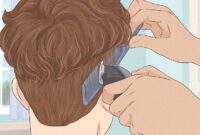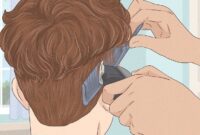How to Dry Curly Hair Well – smartesthairstyles.com – While curly hair is a blessing that many women with straight hair would die for, it also presents some challenges. Curly hair tends to be drier than straight hair, prone to frizz and breakage, and requires a lot of maintenance. Drying often takes a lot longer too! Here are ways to air dry your hair to reduce the damage caused by heat, blow dry it with minimal damage, dry it faster, and strengthen and suppress curls during drying.
- Allow your hair to air dry
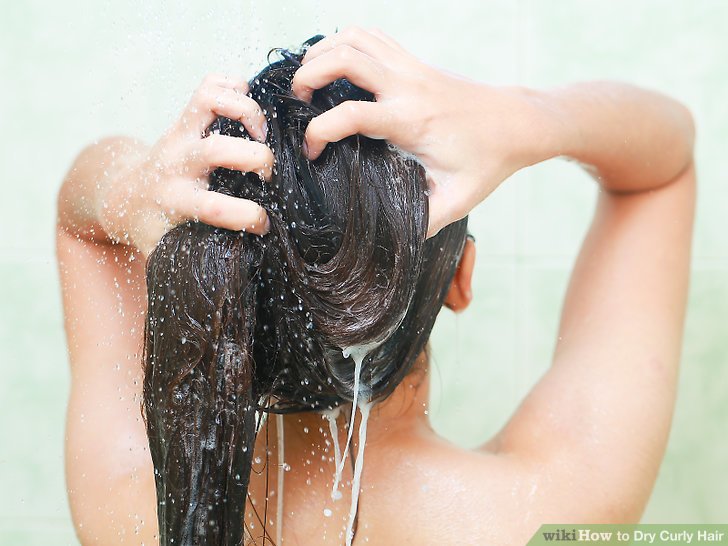
wash your hair Curly hair is often drier than straight hair because the natural oils produced on the scalp have a hard time maneuvering through the curls of curly hair. The result is that these natural oils are not distributed throughout the hair, especially the ends. This causes the hair to be dry and then breaks and becomes frizzy. If you wash your curly hair every day, use a moisturizing shampoo that will moisturize it to prevent breakage and reduce frizz, split ends, and shine.
Choose a shampoo that is either sulfate-free or does not contain ammonium lauryl sulfate, ammonium laureth sulfate, or sodium lauryl sulfate. These are essentially powerful cleansers that strip your hair and scalp of the natural oils your hair needs.
Try to stay away from any products that contain alcohol, which will soak up the hair’s moisture and give the curls a crisp look and feel.
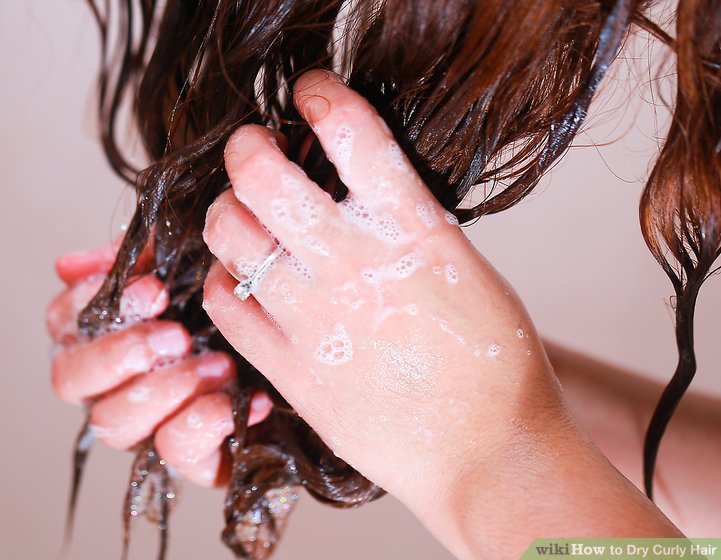
Alternate between a moisturizing and a protein-rich conditioner. Hair needs a balance of moisture and protein to be resilient. This means it stretches without breaking and is the main indicator of your hair’s health. Protein conditioners not only penetrate the hair shaft to make it stronger, but also form a film on the hair cuticle, or the outer layer of the hair, allowing it to lie flat. This helps reduce frizz.
Use a protein conditioner with wheat, keratin, silk, milk, collagen, or soy, or a moisturizing conditioner with jojoba oil, glycerin (or vegetable glycerin), aloe vera, shea butter, or vitamin E.
You can switch between the two daily, every few days, or weekly. You can even use one more often than the other depending on the texture of your hair and how often you heat style it.
Use a protein conditioner more often if your hair feels dry and frizzy, stretches a lot but still breaks, feels wet, or if it doesn’t hold its curl or style very well.
Use a moisturizing conditioner more often if your hair breaks or tears easily, feels brittle or straw-like, or doesn’t stretch very much or at all.
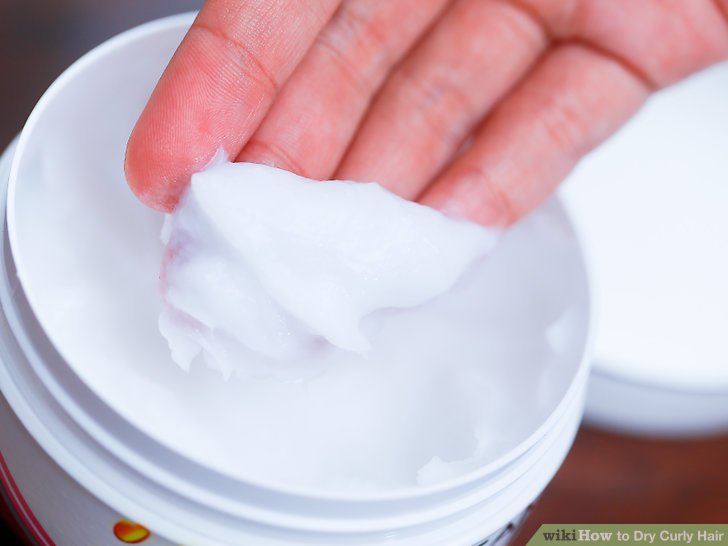
Instead, try “co-washing” your hair with conditioner. The “co-washing” movement calls for avoiding shampoo as a main part as it removes natural oils over time. Instead, it’s best to use a gentle cleansing conditioner. Choose a conditioner that is suitable for washing together or that says it is a cleansing conditioner. They often label themselves as such and contain natural ingredients like aloe vera. Avoid silicones as they weigh down the hair.
Depending on your hair type, wash your hair with a cleansing conditioner every 3-7 days. The more curly and coarse it is, the less often you wash it.
Use more than usual, massage in from root to end and leave for 3-5 minutes before rinsing out.
Wash your hair with a sulfate-free clarifying shampoo every 2-4 weeks, as cleansing conditioners cause build-up.
Co-washing is not recommended for people with fine hair as it weighs down thin hair and makes it too greasy.
If you don’t know your curl type, head to sites like this one to find out: [1].
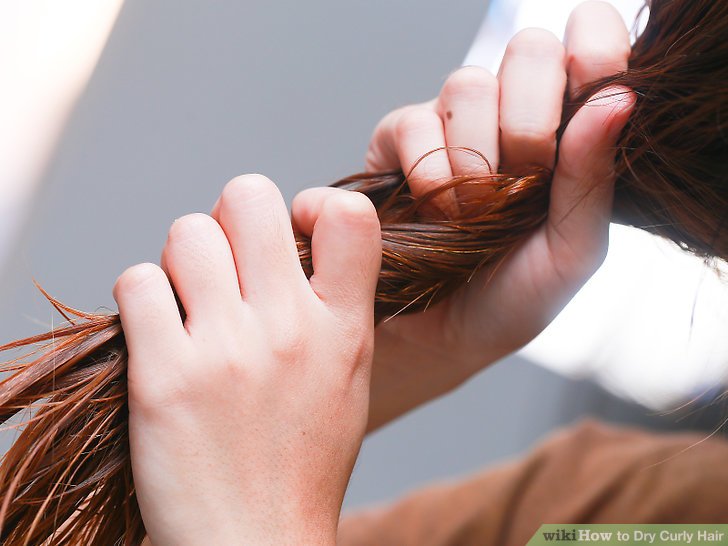
Properly remove excess moisture to speed up air drying. Never rub your hair with a towel to make it drier. Towel-drying your hair vigorously creates friction that roughens your hair cuticle. You want them to lay flat and straight to reduce frizz. Instead, use your hands to gently squeeze any dripping water out of your hair. Next, use a towel or super absorbent microfiber cloth to soak up more water by first squeezing and then patting down.
T-shirts are a great alternative for curly hair as they are smooth and don’t roughen the cuticle of the hair.
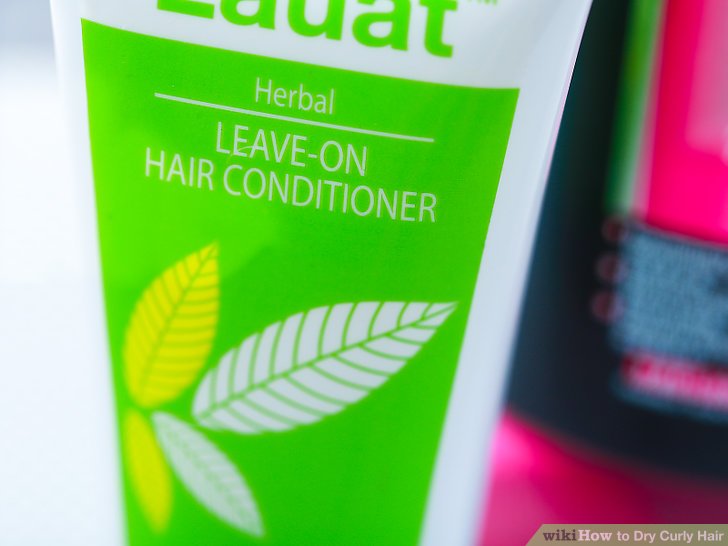
Apply a leave-in conditioner and detangle. Air drying gives the hair more time to absorb moisture from the air and swell. This makes it more likely to break and the cuticles to become rough and cause frizz. Leave-in conditioners contain polymers that create a barrier or film on the hair strand, blocking moisture and reducing frizz. Using a wide-toothed comb, comb the leave-in conditioner through your hair. (Using a brush to pull through your hair after washing is very damaging.) Focus on the midshaft, or mid-length of the hair to the ends. Here are some detangling tips to make the process less harmful.
Divide your hair into 4-8 sections and secure each one with bobby pins, flat curling clips, or alligator clips.
Loosen one section at a time and use either your fingers or a wide-toothed comb to gently comb through your hair, starting at the ends and working your way down to your roots.
If you come across a particularly pesky knot, put some conditioner on your fingers to untangle it.
Once you’ve detangled one section of hair, twist and pin it back before moving on to the next. When everyone is done, take all the pins and clips out of your hair.
If your hair is very thick, very curly, or you have a lot of curls, use a long-toothed comb that can get into your hair.

Apply the appropriate product for your hair. Air drying your hair doesn’t mean just letting it air dry. Using products makes a world of difference when styling without heat. You should apply an anti-frizz and/or curling serum, oil, cream, gel, mousse, lotion or spray before your hair becomes too dry to control frizz and define your curls and to control/hold. The style(s) you choose will depend on the texture of your hair, your curl type, and how you want your curls to look. You may find that a combination of two or more works best.
Serums, oils, lotions and creams are commonly used for smoothing.
Gels and thicker creams are most commonly used to aid in control/posture or definition/shaping.
Mousses and mousses add volume and also help define/shape.
Sprays can do many of these things, in addition to adding texture.
Reading reviews online is a great way to help choose products.
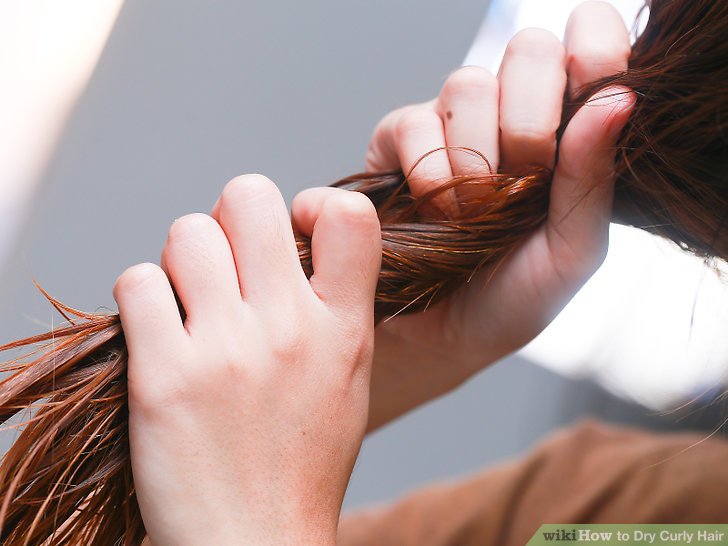
Part your hair and scrunch or twist it. Use a comb or your fingers to shape your natural parting. Find your natural part by slicking your hair back and then shaking your head. This will cause it to separate naturally. Then, move your fingers along your scalp in a zigzag motion to lift your hair away from the roots. This gives it buoyancy and airflow to dry faster. Next, use your hands to either scrunch or twist your hair, depending on the curl type and the look you want.
When doing the scrunch, either stand up straight or rotate your head first to one side, then the other, and then forward.
In any case, put your hand under the ends of your hair, strand by strand, and scrunch them up toward the root a few times. Then go to another section.
As you twist your fingers, hook 1-3 inch sections of hair and twist them around your finger, moving from bottom to top, and hold for 15-30 seconds. They should be pretty well defined. If not, add a little more product to your hair.
While your hair is drying, don’t touch it! Running your hands through your hair only breaks up the curls, creating flyaways and frizzy strands.
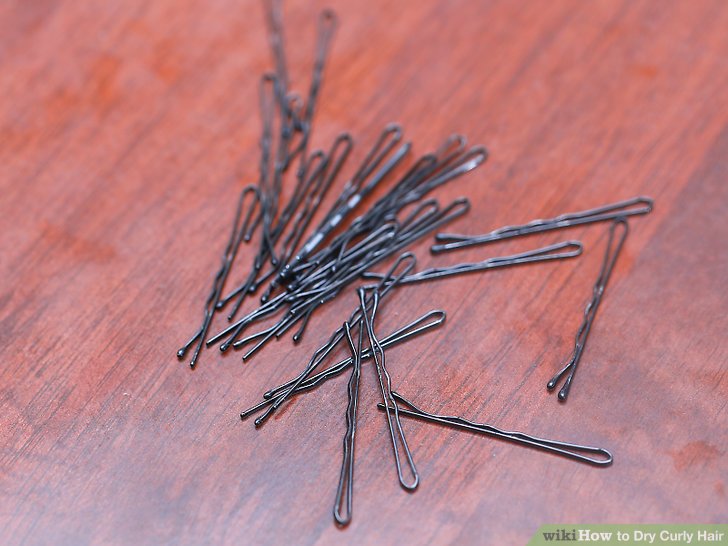
Add volume with pins and parting techniques. One of the benefits of using heat to dry your hair is that it helps lift the roots to create volume, especially at the top of the head. Here are some tricks for adding volume by parting your hair and pinning it in different ways while it air dries.
Part your hair on the side you wouldn’t normally do, then flip it back just before it’s dry.
Create a deeper side part on the side where you usually part your hair, then flip it down just before your hair is dry.
Make a zig zag part and part your fingers along your natural part just before your hair dries. Or you can make a zigzag part after your hair has dried.
Using flat-tipped pins that won’t leave lines or marks in your hair, take curling clips and clip them to the roots on top of your head and along your parting line. Remove them when your hair is dry.
Use claw clips to secure rows of hair. Grab two strands of hair about 1-2 inches long near your forehead (one on each side of your parting), cross them and secure with a small claw clip. Make 2-4 more rows behind or away from your forehead.
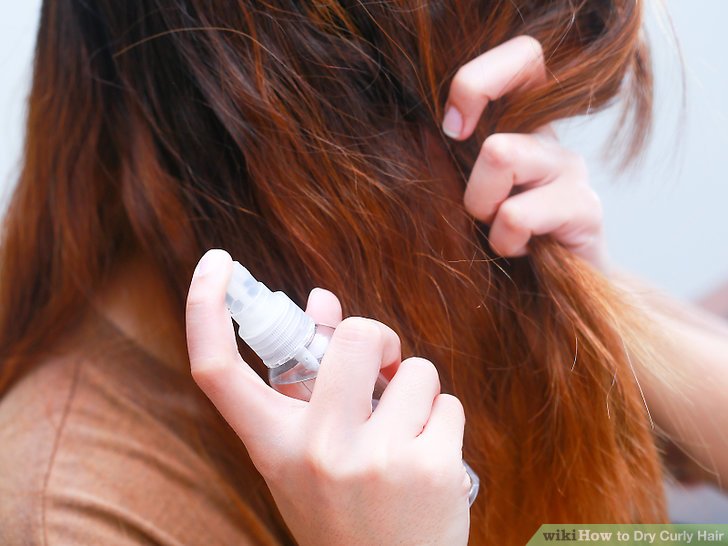
Let your hair dry and give it the finishing touch. Allow your hair to dry completely and then remove any clips. Use your fingers to part your curls unless they have dried into your favorite hairstyle. When parting, use only one or two fingers to gently loosen each curl. You can loosen them more a second time; However, over-loosening is not an easy fix. Finish off with a styling product like this.
Spritz or spritz a medium-hold, flexible or moisture-proof hairspray all over your hair. Hold the can about 30 cm from your head. Keep your hand moving at all times and use the smallest amount needed.
For a textured or piecey finish, rub an inch-sized amount of pomade between your palms. Use your fingers to apply it from mid-shaft to ends.
Use thicker, water-soluble gels (or those containing guar gum) that don’t feel sticky to tame and control medium to large curls. For tight curls, use denser creams.
You can also finish your hair with an anti-frizz or smoothing serum or a natural treatment oil like argan, coconut, avocado, sweet almond or grapeseed oil. Use just a dab and rub between your palms before either a) applying to areas that are frizzy or in need of more control, or b) applying to the ends in a twisting motion.
Avoid products with silicones unless they are water soluble or gentler on hair. Gentler silicones are Amodimethicone, Cyclomethicone/Cyclopentasiloxane and Trimethyl-silylamodi-methicone. Silicones that are more water soluble include behenoxydimethicone and stearoxydimethicone.
- Blow dry curly hair
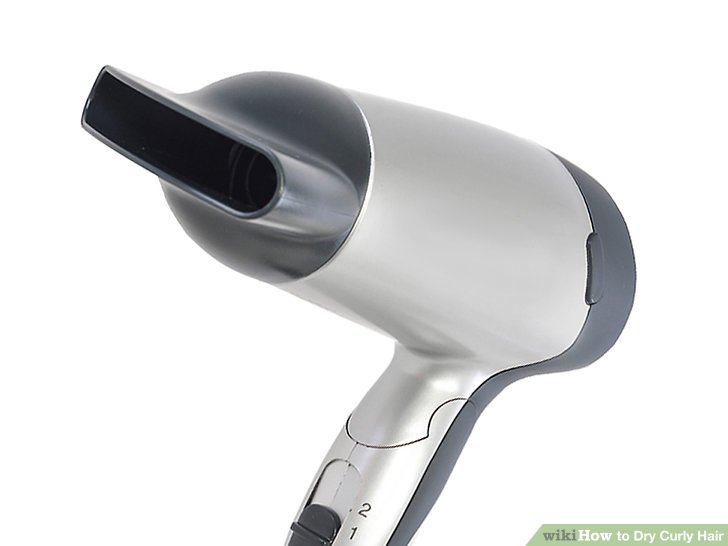
Buy the right hair dryer. Any application of heat to hair is detrimental in some way, especially for curly hair, which already tends to be dry and more prone to breakage. In fact, excessive heat changes the proteins in the hair that create the characteristic spiral shape of curly hair. So use a blow dryer that is no more than 1300-1874 watts (1400 watts is all you really need) with a cold start button and multiple heat and speed settings.
If you like drying your curly hair frequently, get a ceramic, ceramic ion, or ceramic tourmaline blow dryer. All reduce damage by either emitting infrared heat or using negative ions to break down water molecules.
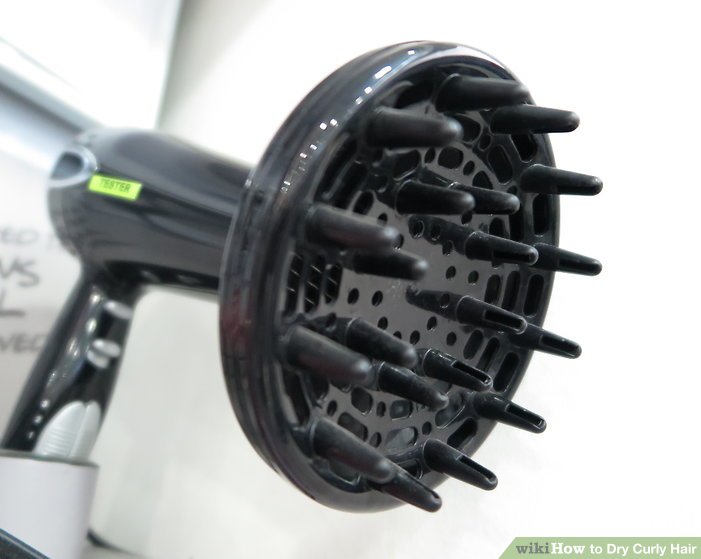
Make sure you get a diffuser. Some blow dryers come with diffusers; others not. Still, they’re vital for blow-drying curly hair, as they help distribute heat evenly, create volume in heavy curls, minimize frizz, and keep curls intact. The normal nozzle of a blow dryer blows hair everywhere, which only distorts curl patterns and creates frizz. Diffusers also enhance curls on less wavy hair.
Choose a diffuser that is concave or non-flat in the center to allow curls to rest and take shape naturally. Or buy one that has a cup-like shape that curls can nestle into.
Also look for a diffuser that is about 2.5-3 inches wide to spread the heat better and has “fingers” at least 1.5-2 inches long to help separate the curls support. They must be long enough to reach the roots for lift and volume.
While many diffusers claim to fit all hair dryers, online reviewers say that’s not always the case. You may have to use trial and error.
You can also buy a blow dryer that comes with a diffuser, buy a diffuser that comes with a ring or strap to attach to your blow dryer, or go to your blow dryer company’s product website and see if they have specific diffusers for She recommends dryer model.
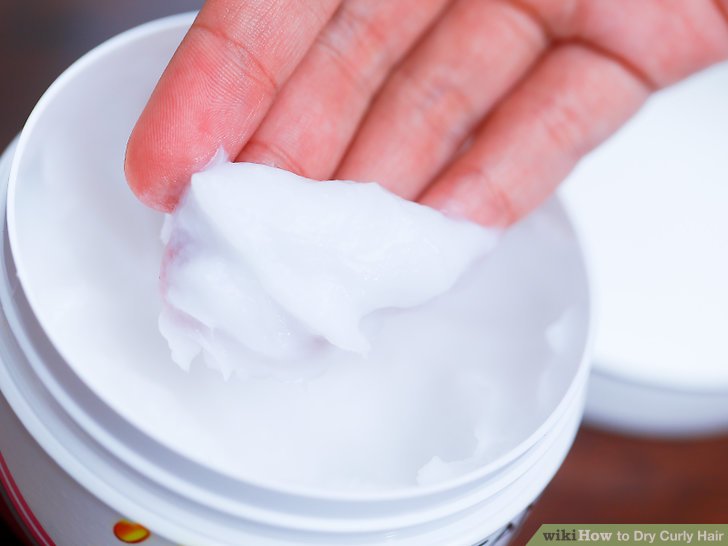
Wash and condition your hair. After shampooing, use a wide-toothed comb to distribute either a moisturizing or protein conditioner through your hair. When you’re not washing together, alternating between the two on a daily or weekly basis will help maintain the right balance between moisture and the hair’s protein needs for strength and elasticity. Leave it in your hair for a few minutes before rinsing it out. Then rinse your hair again with cold water to seal the cuticles.
Then use your hands to gently squeeze excess water out of your hair. Next, squeeze your hair with a t-shirt, soft towel, or super-absorbent microfiber towel to soak up more water before patting down to lay the cuticles flat.
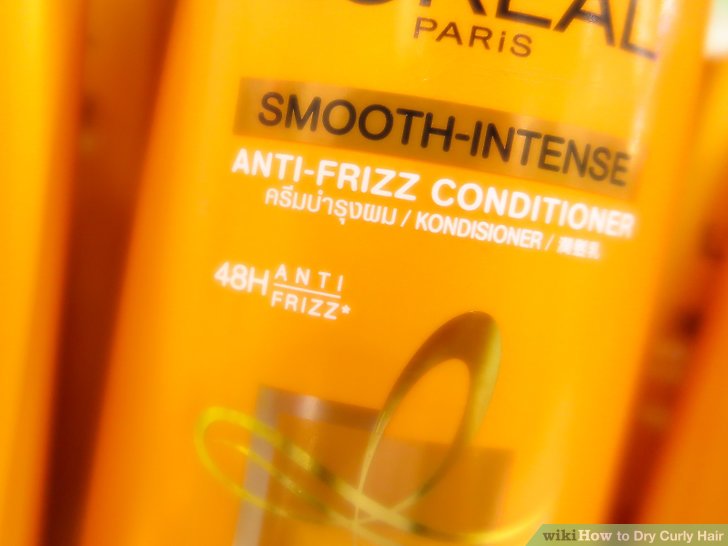
Apply an anti-frizz, curling or straightening product and detangle your hair. Divide your hair into sections and use a wide-toothed comb to detangle your hair. After untangling one section, twist and secure with a clip. When you’re done, remove all the clips.
You can apply the product to each strand of hair while detangling. Or you can apply it later.
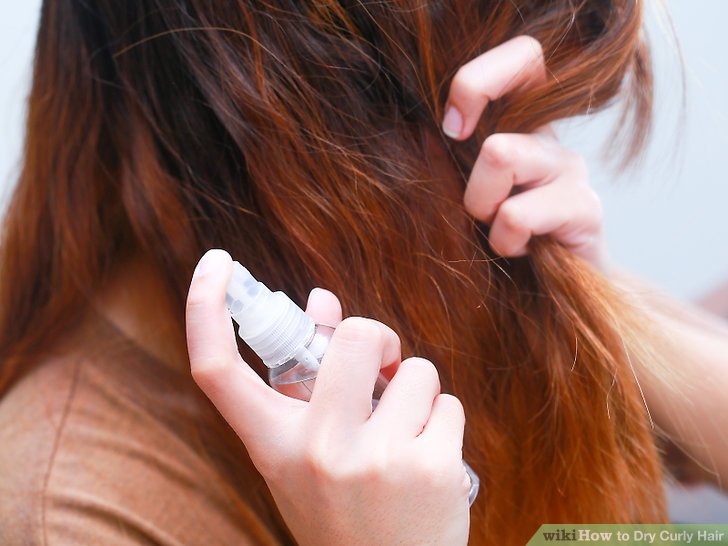
Apply a thermal protectant. Although you dry your hair on low to medium heat, any heat will damage the hair. Thermal protectants form a protective barrier around each hair stand to reduce damage to the hair cuticle. They also reduce drying out of the hair shaft more than necessary. Some are silicone-based and offer the best protection, but these also cause the most build-up and often weigh hair down. Others are water and oil based. You should avoid the latter if your hair gets greasy quickly.
After combing it through your hair, create your part, hold the ends of your hair with your hands, shake them from side to side and then release to allow your curls to spring back up.
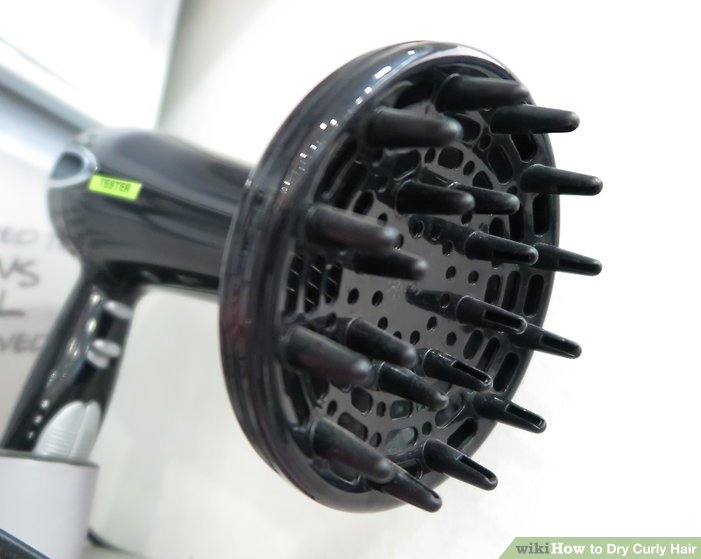
Dry your hair with the diffuser. There are a few ways to do this, and a lot of it depends on the length and thickness of your hair and how much volume you want to create. For starters, however, always work in sections (you can use clips if that helps). Also, blow dry on low to medium heat to avoid burning your scalp and use a low to medium air speed setting to reduce frizz. Also, if your hair is curly and not wavy, only dry your hair 80-95% before letting it air dry the rest of the way. Do the ends last or not at all. Both actions reduce damage and frizz.
One way to dry with a diffuser is to hold the blow dryer at a 90° angle from your head and place the diffuser at the roots of a strand of hair. Start at the nape of the neck and gently hold the ends away from the blow dryer. Turn on the blow dryer and use the diffuser fingers to lift the hair at the roots. At the same time, move in a circular direction.
Another way that adds volume is to flip your head and place the diffuser at the roots of your hair. Use the diffuser’s fingers to lift the roots in a circular direction. Then use the diffuser to scrunch up the mid shaft to hold and dry. With this method, you want the root and midshaft to dry completely to lock in the volume.
Another option is to tilt your head to one side and use your hand to pull up a section of hair from mid-shaft to root. Place the diffuser at the roots and hold the dryer at a 90° angle. Then turn on the blow dryer and dry it for a few minutes before turning it off to move to another section. Tilt your head in the opposite direction to do the other side, then start at the top of your head and work your way down. At the end, go back with the dryer’s cool-shot button to set it.
Finally, when your hair is wavy and you’re trying to add more curls, place your ends in the diffuser cup piece by piece. Press it onto your scalp and hold until dry.
Some also find it beneficial to let their hair air dry for 20-30 minutes or until it is about 50% dry to allow its natural curl pattern to better form. However, if you’re trying to strengthen the curls, you should start drying right away.
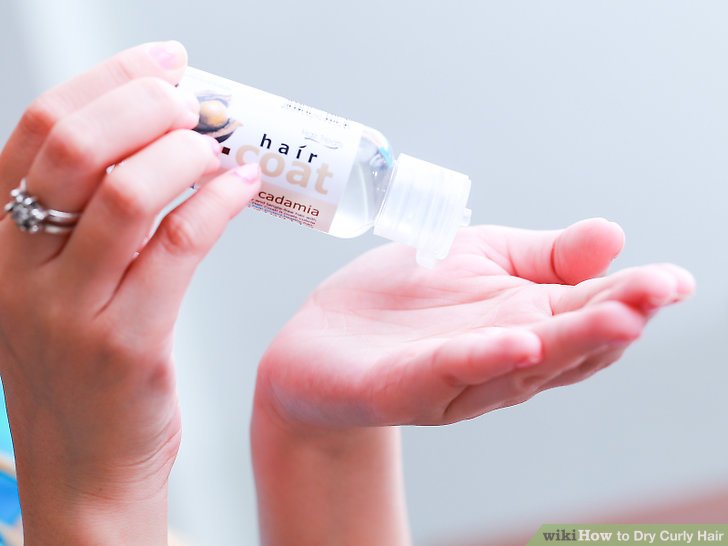
Let your hair dry completely and apply a finishing product. Once your hair is dry, you want to set it in place. Spritz or spritz a medium-hold, flexible or moisture-proof hairspray all over your hair in one continuous motion. You can also use a pomade, especially if your hair is feeling a bit frizzy, by smoothing it over your curls, not through them. Or you can finish with a drop of serum or a natural-based oil. Smooth it over frizzy areas or apply it to the ends with a twist.
- Dry your hair faster
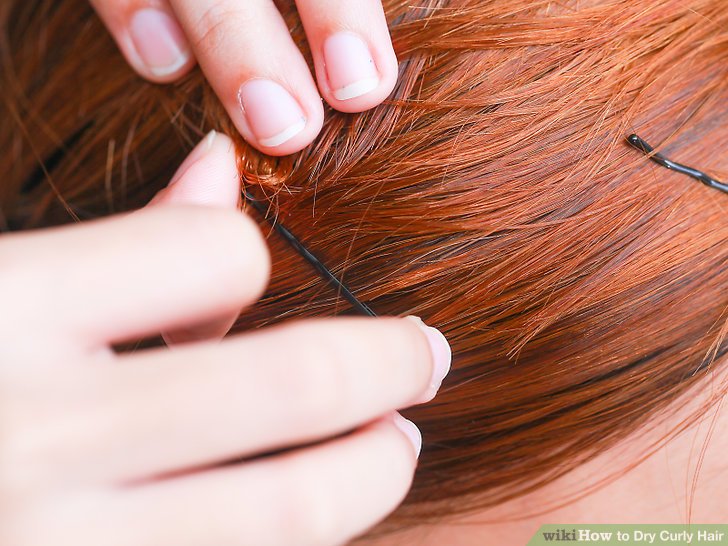
Curl and wrap the hair. Heat drying medium length curly hair typically takes 30 minutes, if not much longer. If you don’t have that time, in many cases your best bet is to fix and wrap your hair before you go to sleep. While your hair is still damp, not wet or dry, wrap 1-2 inch sections towards your scalp and secure each with bobby pins. Then wrap your hair in a silk scarf to reduce flyaways. As you stand up, use your fingers or a wide-toothed comb to detangle and style your curls.
If your hair is particularly curly, you can also twist or braid it before wrapping it.
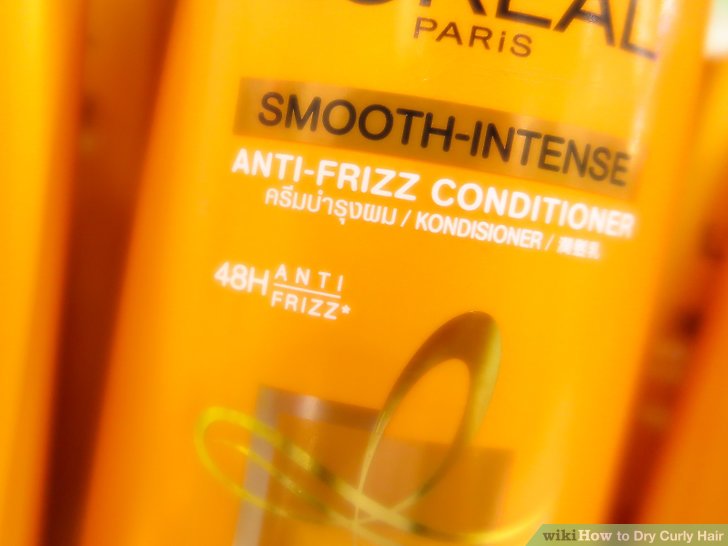
Try “plopping” your hair to speed up drying time. The idea behind plopping is that it not only cuts down on the time it takes your hair to dry, but it also helps create a more polished curly look. Because your curls will stack on top of each other from the plopping, they’ll have more bounce and shape, and you’ll get more volume at your roots. First wash, condition and apply an anti-frizz or curling product to your hair. Then follow these steps.
Lay a large t-shirt on a flat surface with the short sleeves closest to you.
Bend and place your head in the middle so your hair is above it on the t-shirt and fold the end of the t-shirt over your hair and head.
Grab the sleeves and turn them inward toward your ears. Tie it (or fasten it with a clip) loosely at the base of your neck.
Leave it on for about 15-30 minutes and let your hair air dry the rest of the way.
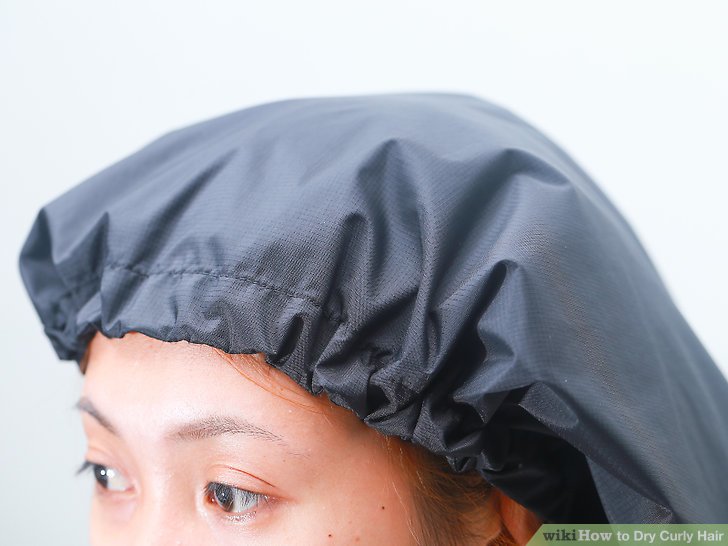
Use a hood or hood dryer. A hood dryer is a plastic cap that you wrap around your hair to dry it. It’s a gentler method of drying hair than using a blow dryer, although it takes longer. Nonetheless, it will also speed up your overall drying time if you don’t want to use a hair dryer because of its harmful effects. Hood dryers are another less harmful alternative. They’re not as expensive as you might think; However, make sure you buy one big enough to hold your head in rolls.
Both are also hands-free, which is a plus.
- Dry hair to suppress and enhance curls
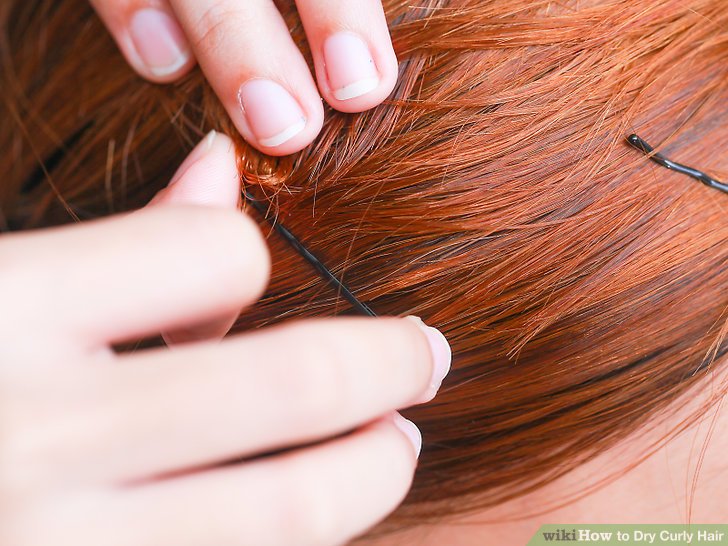
Relax your curls with a “Doobie” wrap. A doobie wrap — or simply doobie — is a Dominican technique for wrapping and pinning hair to straighten it. Start with wet hair. Part it down the middle and start on one side by smooth combing 1-3 inch strands. Using the comb, pull and smooth each strand around your head. Secure them with a long bobby pin at the top of your head, the nape of your head. Go to the other half of your hair and do the same thing, combing it over the hair that’s already pinned.
Wrap a silk scarf around your hair when you go to sleep.
Otherwise, let it air dry or use a hood dryer or hood dryer.
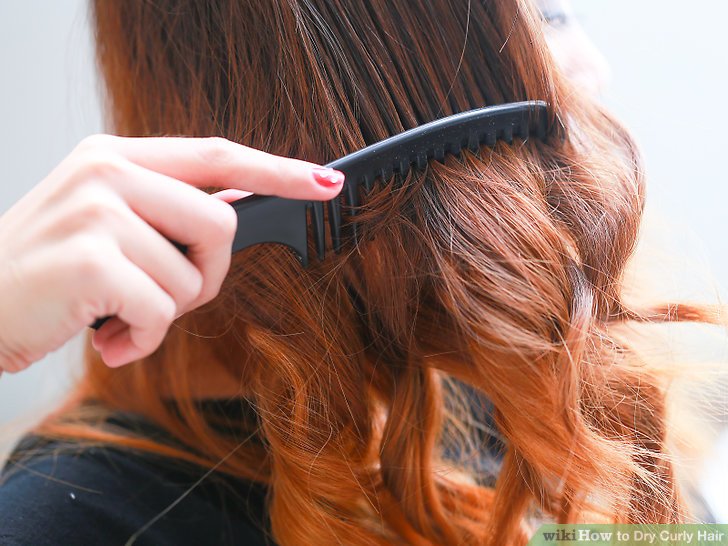
Set your hair in curlers to relax or straighten the hair. Start by applying a setting lotion to your hair. This helps with smoothing and ensures that the smoothing lasts longer. Use a wide-tooth comb to part your hair into sections and roll 2-4″ sections onto 2-4″ metal or mesh rollers. Pull tight on the scalp as this is the area most resistant to smoothing. Secure each roll to the scalp with a large clip. Make sure you roll backwards, away from your face.
Allow your hair to dry naturally or use a bonnet or hood dryer on low heat before switching to cool to set your curls.
You can also combine air drying with either dryer by letting your hair air dry for a while before using either dryer. Or you can partially dry it with one of the dryers and then let it air dry the rest of the way.
Test that it’s dry by unrolling a roller at the back of your head after about 45 minutes, longer if your hair is very thick or coarse.
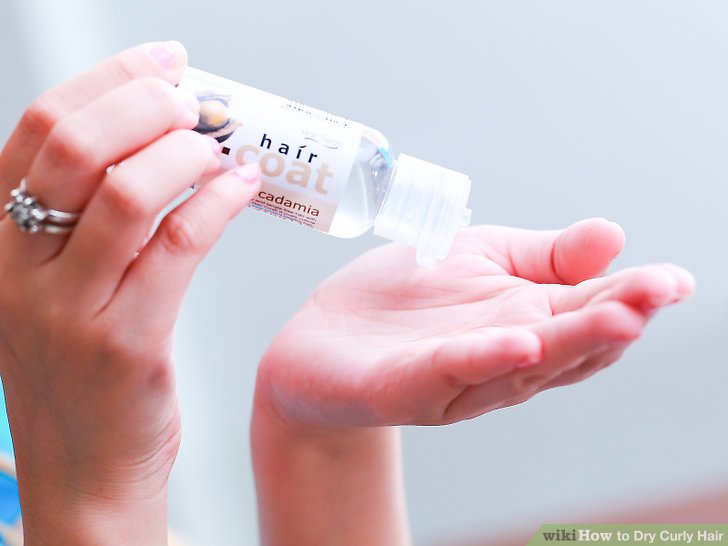
Use the steam from your shower to set curls. First, don’t turn on the vent before you shower. After washing and conditioning your hair, stay in the shower or bathroom and let your hair soak in the steam. This will help enhance your curls. Then apply a curl or anti-frizz serum, lotion, cream, oil, etc. to your hair while it’s still fairly wet.
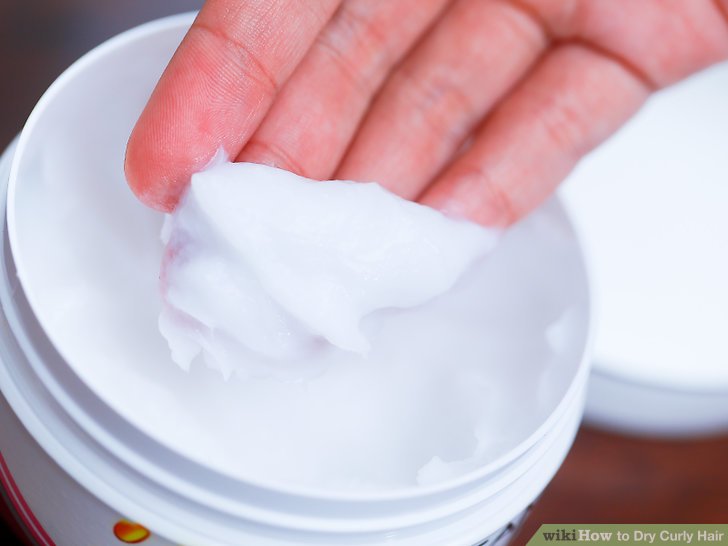
Use a product that enhances curls. There are a number on the market so reading online reviews is a good place to start if you aren’t already using one. You should not use too much of any product as it will weigh down the hair and your curls will not last as long. Using a moisturizing conditioner and not rinsing it out will enhance and hold curls unless your hair is fine or wavy. Applying mousse and then kneading it works very well on less curly hair. It can also help shape and define curls.
Use about an inch to quarter sized amount of anti-frizz serums, creams and oils. If you overdo it, sprinkle some baby powder or dry shampoo on your hair and use your blow dryer to blast the area with cool air.
If using mousse or foam, spray on a cloud the size of a golf ball. Clasp your hands together and use your fingers to comb it through your hair, starting at your roots.
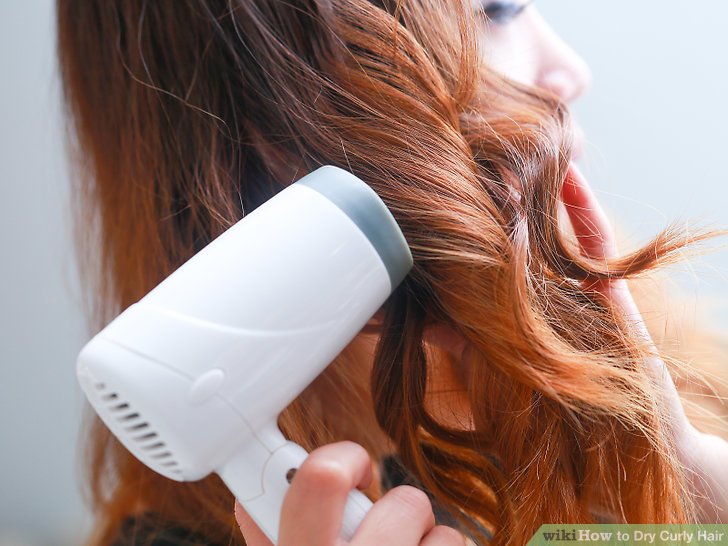
Blow dry hair straighter. This can be quite damaging to your hair, so use a thermal protector and the lowest heat setting on your blow dryer. You’ll also want to use a blow dryer with a concentrator attachment, which directs the heat in a way that doesn’t fly your hair around and create frizz. Using a large, round boar bristle or nylon brush, work in 2 to 3 inch sections. Roll tightly under your hair while running the blow dryer over it.
Make sure the blow dryer is pointed downward to smooth the hair cuticle.
Always start at your roots and work your way towards the ends.

Defy gravity if you have wavy hair. When trying to make wavy hair hold its wave or curl it up, the goal is to avoid anything that pulls on the waves. Blow drying with a diffuser is one option. Turn your head over and to the sides to knead, whether you air dry it or use a blow dryer.
Use lower heat and speed settings when using a blow dryer for a gentler drying that won’t stretch or blow out curls.


